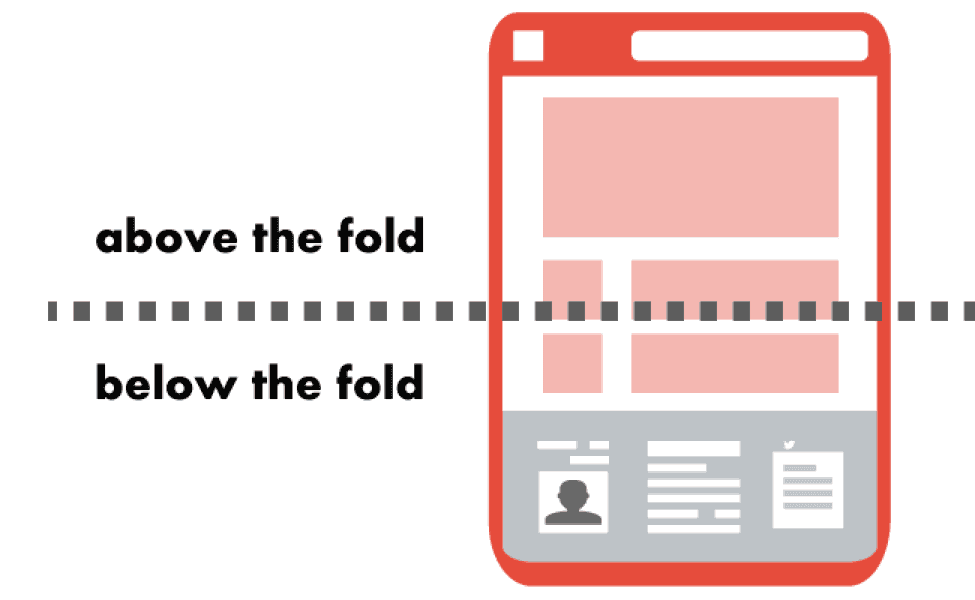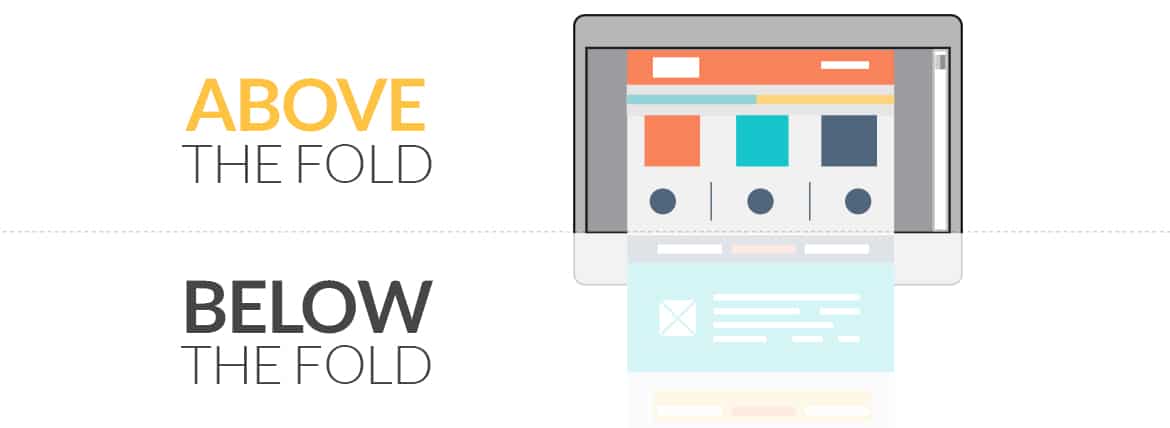What is Below the Fold?
Below the fold is a term that refers to the area of a webpage that a user must scroll to see. In other words, the content is not immediately visible when they first land on the page so they must scroll down the webpage to view it.
Below the fold is a term that originated with newspaper publishing when there was an actual fold in the middle of a physical page of a newspaper. Therefore, below the fold refers to anything that came beneath that fold. For digital marketing purposes, the fold is where the page naturally ends before you need to keep scrolling.
In newspaper publishing, content that was considered less important was usually placed below the fold because it was unable to be seen when displayed on a newsstand. For digital marketing, content placed below the fold isn’t necessarily less important, but it may not be as urgent or flow well at the start of a blog or webpage.
The fold is typically located at approximately 600 pixels from the top of the page; therefore, when you are strategizing webpage content and call to action buttons, you must understand your platform and its spacing.

Why is Understanding “Below the Fold” Important?
When it comes to webpages, how much users engage with your content is important for generating leads and turning those leads into customers.
Content placement can not only affect user interaction but also how they interact with it and their level of interest overall. The content below the fold is hidden from users when they first land on a page, and if they decide to leave the page without scrolling, they won’t see it at all. Research has shown that placing ads, calls to action, and other content below the fold on a webpage can greatly reduce the likelihood that it will ever be viewed.
Due to decreased visibility, web designers, writers, and marketers have to be thoughtful about where ads and other content are placed. If something is below the fold, it typically generates fewer conversions, which can end up costing your business money and valuable resources.

Do People Scroll Below the Fold?
So, now that you know what “below the fold” means and why it’s important, the next big question is whether or not people actually do scroll below the fold. The best answer is that it depends on a few factors:
- What type of page they’re on
- What they need and are looking for
- Their interest level in your product or service
- Whether or not the user is part of your target audience
It is important to think about each of these factors, especially when optimizing your pages to improve your conversion rate. A good rule of thumb for overall success is to keep content clear, concise, and relevant at all times.
Keep in mind that content that appears above the fold will gain the most engagement, but that users are more likely to scroll below the fold when they’re interested in your content, looking for answers through your product or service, or engaged with your page.
Not sure if your website has implemented conversion rate optimization best practices? You deserve the best! Learn about Directive’s conversion rate optimization services with a free proposal today!
